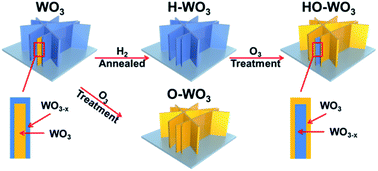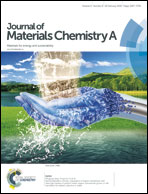WO3 photoanodes with controllable bulk and surface oxygen vacancies for photoelectrochemical water oxidation†
Abstract
Introduction of oxygen vacancies for semiconductor photoanodes is an effective method to accelerate charge carrier transfer and improve the photoelectrochemical performance. However, excessive surface oxygen vacancies are always created in this process and the surface recombination will be aggravated. This paper describes an ozone treatment method that could effectively heal surface oxygen vacancies and suppress the recombination of photogenerated electron–hole pairs on the surface of two-dimensional WO3 nanoflakes. The ozone treatment method can oxidize the W5+ on the surface of photoanodes to decrease the surface oxygen vacancies, which results in a significant cathodic shift of the onset potential of ∼0.15 V in comparison with the pristine WO3 photoanode. The hydrogen and ozone-treated WO3 sample exhibits a photocurrent of 2.25 mA cm−2 at 1.23 V vs. reversible hydrogen electrode and excellent stability over 10 hours and its overall faradaic efficiency for the water splitting reaction is ∼90%.



 Please wait while we load your content...
Please wait while we load your content...